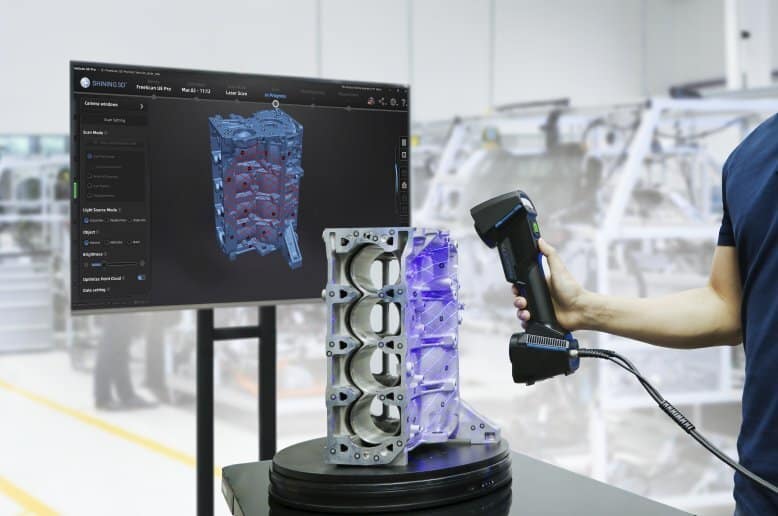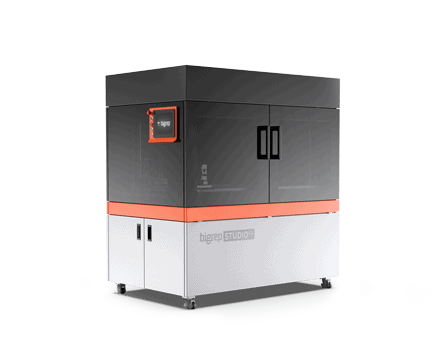In the realm of aftermarket car customization, automotive 3D scanners can be the overlooked workhorse that brings physical objects into the virtual space. While some car components might have readily available 3D models, designing individualized or original 3D prints needs 3D scanners to recreate an object’s geometry accurately in a simulated environment. The 3D scanner does this by capturing millions of data points from all angles of the part and in minutes you have a complete digital clone of it. This virtual version serves as a three-dimensional test bed to build and iterate concepts swiftly before going into prototyping and production.
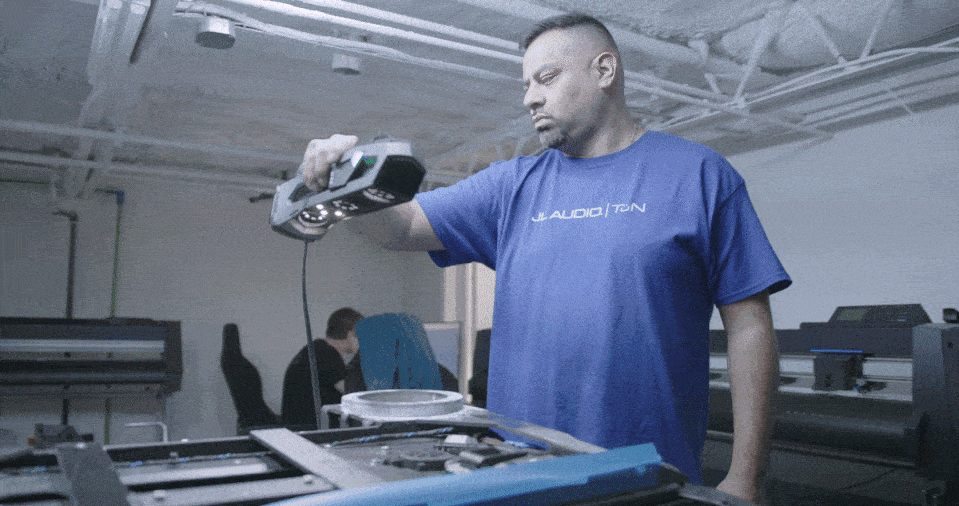
Typically, large-format 3D printers come into the picture when printing car parts or bespoke components like dashboards, consoles, and door panels. Coupled with 3D scanning technology, you get visually aesthetic and highly functional parts. 3D scans seamlessly integrate with large-format 3D printers and streamline the process from the outset saving time, effort and money, resulting in exceptional print quality with fewer failed prints.
So How Do You Pick A 3D Scanner That’s A Good Fit For Your Workshop?
To get to the bottom of this, we will explore:
1. Why Is 3D Scanning Important?
3D scanning offers endless possibilities for customization with which you can design and produce components quickly with a high level of precision and accuracy.
The virtual 3D model can be evaluated to make sure every aspect of the part is precisely measured and is within the specified tolerances.
A 3D scanner captures complex geometries with high-quality CAD files when none are available, improving project results by removing the guesswork.
Modifying and optimizing prototypes digitally before printing them ensures accuracy in producing complex shapes.
Scanning the object that the 3D part is being designed for reduces production time and ensures a perfect fit of the 3D-printed part.
Measuring the component, including details in narrow and hard-to-reach spaces, can be scanned for precise dimensions.
With 3D scanning, virtual testing reduces the need for physical prototypes. Also, the chances of fewer failed prints bring down costs significantly.
2. How Does 3D Scanning Work?
3D scanners create high fidelity, visual, three-dimensional virtual models by capturing 3D surface data from an object. It uses technologies such as Laser Triangulation, Structured Light Scanning, Photogrammetry, and Time-of-Flight Scanning to recreate the shape, color, and texture of a component digitally. Apart from bringing physical objects into the digital world, you can use the 3D data for inspection, dimensional analysis, reverse engineering, remote part replication, and CAD model validation for 3D printing.
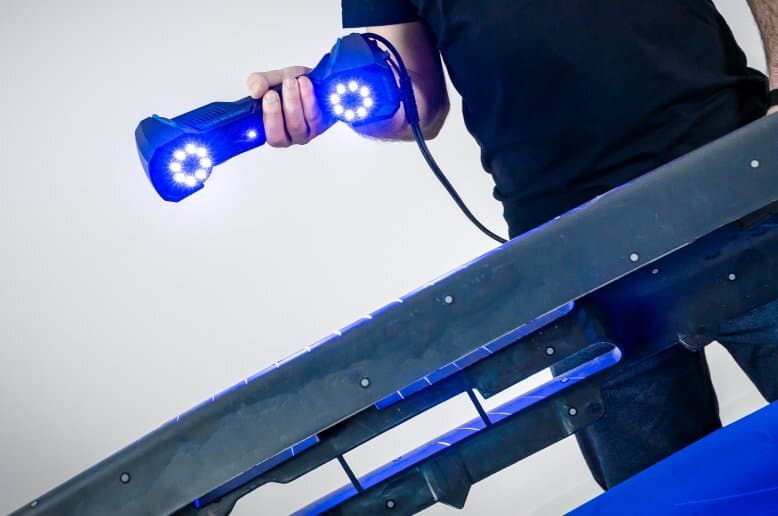
3. What Are the Different Types Of 3D Scanners?
There are a range of technologies for 3D scanners, and each comes with its advantages, limitations, and cost. The compatibility of different types of 3D scanners with large-format 3D printing depends on factors like scanning range, resolution, scanning speed, and the level of detail necessary for printing the vehicle’s part. Here are the different types of 3D scanners and their potential to integrate with large-format 3D printing:
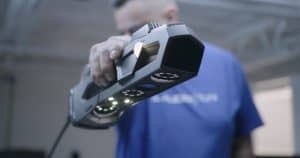
1. Laser Triangulation Scanner
This scanner projects a laser line or dot pattern onto the object and captures its reflection angle with sensors to replicate the shape. It is usually used for smaller objects, but it also scans the geometry of larger formats.
2. Structured Light Scanner
A Structured Light Scanner projects light in the form of lines onto the object and analyzes the field of view to generate a 3D model. It works well with large objects as it can capture complex shapes and details and has a large scanning range.
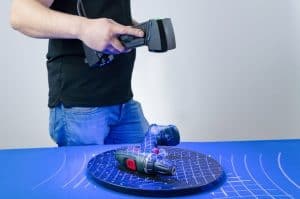

3. Photogrammetry Scanner
Instead of using active light sources, the Photogrammetry Scanner reconstructs a 3D model digitally with multiple photographs taken from different angles. Photogrammetry is commonly used in large-scale applications like architecture and landscape scanning.
4. Time-of-Flight Scanner
The name "Time-of-Flight" may seem somewhat arbitrary for a camera-like scanner, but it gets its name from the underlying principle it is based on. This scanner emits light and measures the time it takes for the light to bounce back from the object's surface. It can capture large objects easily and is used for large-format 3D printing projects.
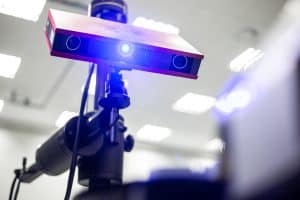
4. What Is The Scan-To-Print Workflow?
Scan-to-print workflow is exactly what it says - it’s the steps involved in transforming a 3D scan into a printable model. After capturing the object using a 3D scanner, the 3D data is processed and cleaned with a specialized software. Next, the scanned model is converted into a 3D printable format like an STL file. Finally, the model is prepared for large-format 3D printing by optimizing the orientation, adding support structures, and slicing the model into layers.
STEPS FOR A 3D SCAN-TO-PRINT WORKFLOW
1. Scan the Object
With a high-precision scanner of 100 microns± accuracy, scan the object.
2. Refine the Mesh
Clean up the scan data with scanner software that’ll repair small gaps and simplify the scan.
3. Edit the Model
Refine the 3D model using CAD software by combining multiple scans if necessary.
5. Prepare for Print
Set up the printer with the printing filament and configure the device's parameters.
6. Get 3D
Printing
Print the part with an industrial printer perfect for automotive customization like the BigRep STUDIO.
7. Post-Process the Part
Wrap up the process by removing support or excess material, sanding or polishing the part.
STEPS FOR A 3D SCAN-TO-PRINT WORKFLOW
1. Scan the Object
With a high-precision scanner of 100 microns± accuracy, scan the object.
2. Refine the Mesh
Clean up the scan data with scanner software that’ll repair small gaps and simplify the scan.
3. Edit the Model
Refine the 3D model using CAD software by combining multiple scans if necessary.
5. Prepare for Print
Set up the printer with the printing filament and configure the device's parameters.
6. Get 3D Printing
Print the part with an industrial printer perfect for automotive customization like the BigRep STUDIO.
7. Post-Process the Part
Wrap up the process by removing support or excess material, sanding or polishing the part.
5. What Type of 3D Scanner Is Best for Aftermarket Automotive Customization?
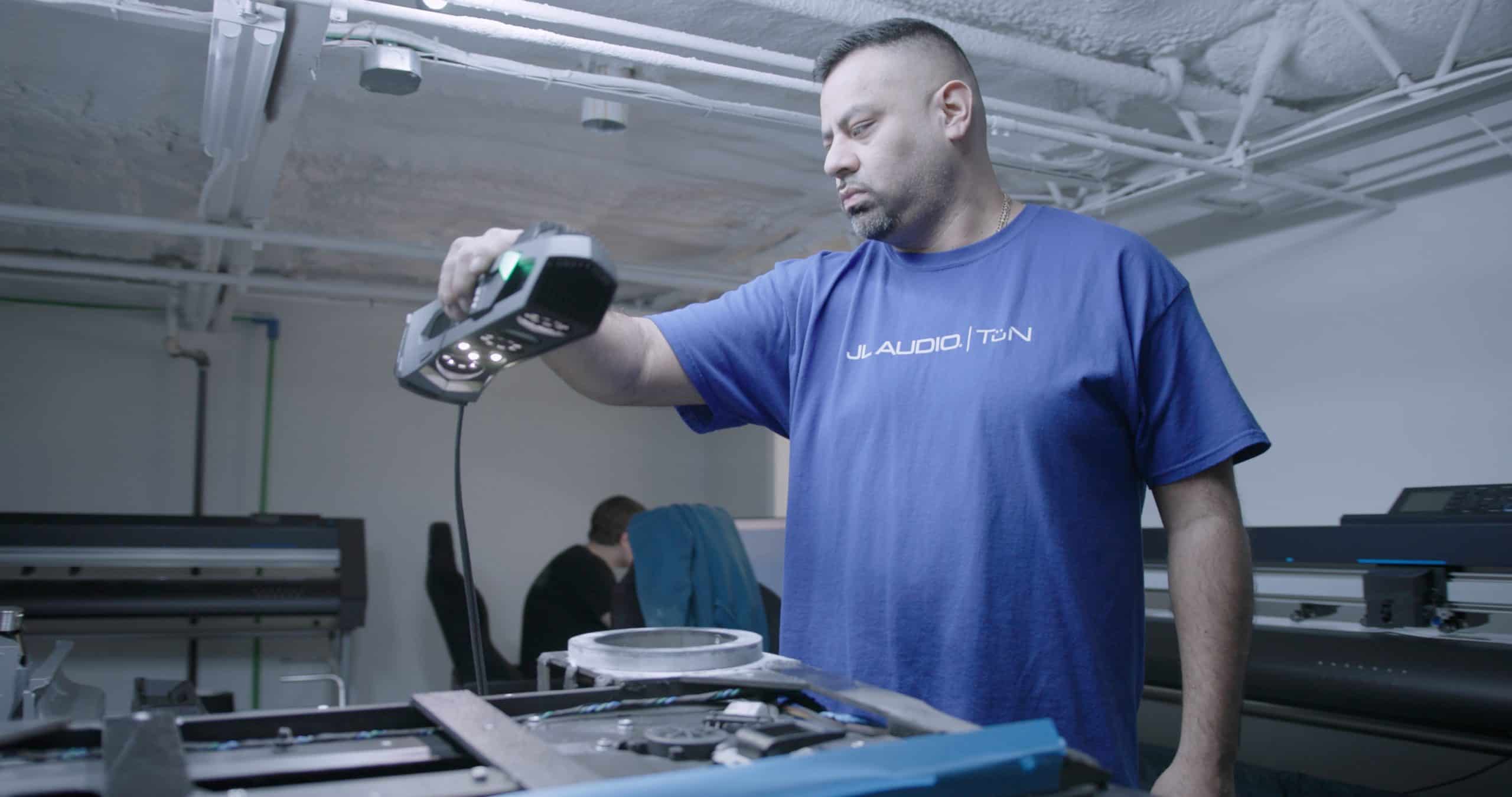
For aftermarket car customization and large-format 3D printing workflows, two commonly used 3D scanning technologies are Structured Light Scanning and Laser Triangulation Scanning. Structured Light gives you high accuracy, making it the perfect choice for capturing intricate car details. While Laser Triangulation captures the overall shape and geometry of larger subjects like car bodies.
A handheld 3D scanner using Structured Light or Laser Triangulation would be the answer for your automotive scanning needs. Handheld 3D scanners offer mobility and flexibility, allowing you to scan objects directly from the car or at any location the vehicle is at. This comes in handy for on-site customizations or restoration projects.
When selecting a handheld 3D scanner, consider factors like scanning accuracy, resolution, ease of use, compatibility with different surface types (reflective or transparent surfaces), and the software used for data processing.
Print Your 3D Scans to Life
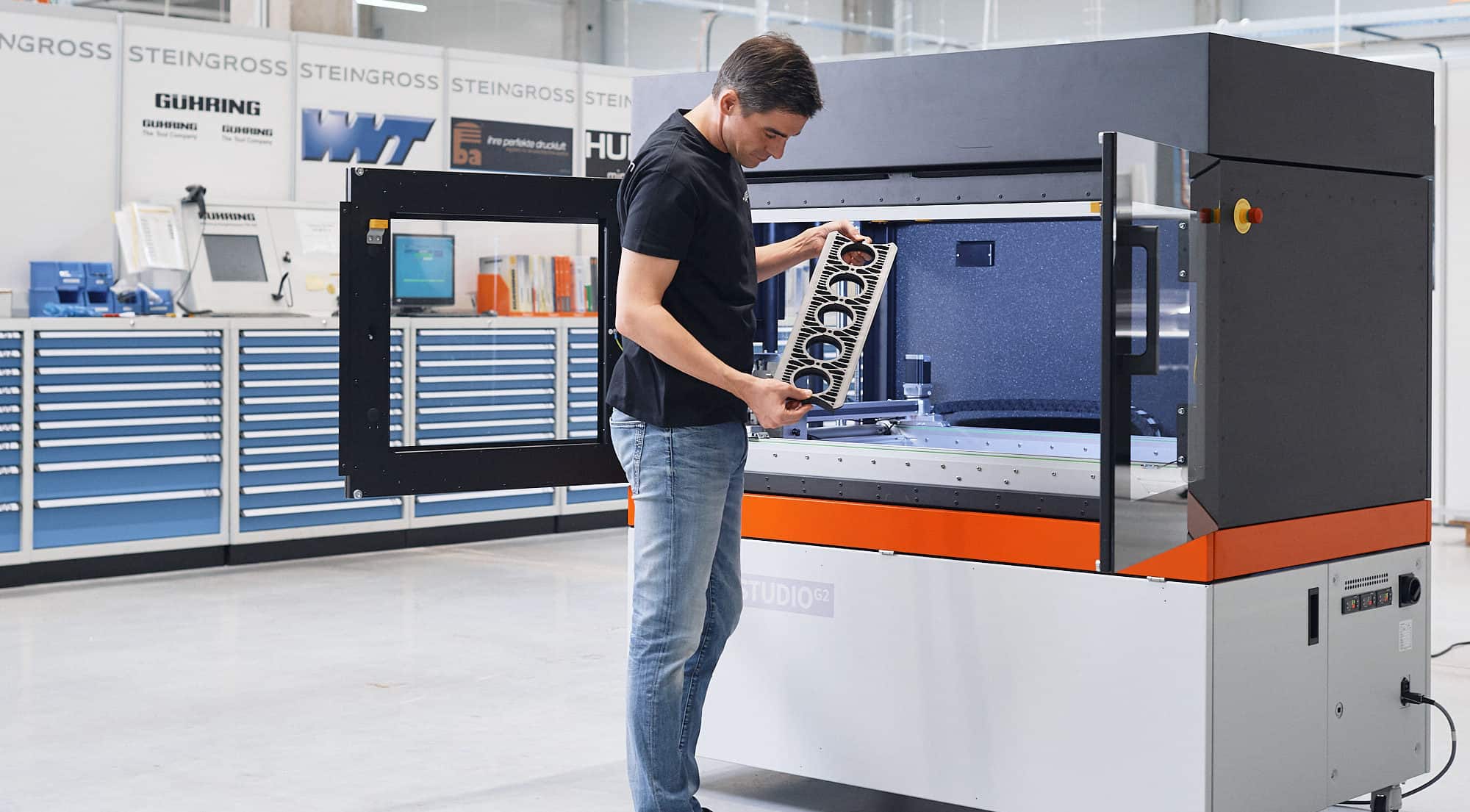
Now it’s time for your design to come to life layer by layer.
This is where BigRep 3D Printers come in. Learn how our 3D printers can give you the transformative power of creating custom car parts that were once concept in your garage. Contact our team today, let us help you THINK BIG!
GRADUATE FROM DESKTOP. GET INDUSTRIAL.
The BigRep STUDIO G2 gets 3D printing off your desk and takes it to the next level. Operating with the same ease as a desktop 3D printer and with 10 times the build volume, the STUDIO G2 provides large-scale industrial manufacturing capabilities in a compact “fits everywhere” build.
GRADUATE FROM DESKTOP. GET INDUSTRIAL.
The BigRep STUDIO G2 gets 3D printing off your desk and takes it to the next level. Operating with the same ease as a desktop 3D printer and with 10 times the build volume, the STUDIO G2 provides large-scale industrial manufacturing capabilities in a compact “fits everywhere” build.
